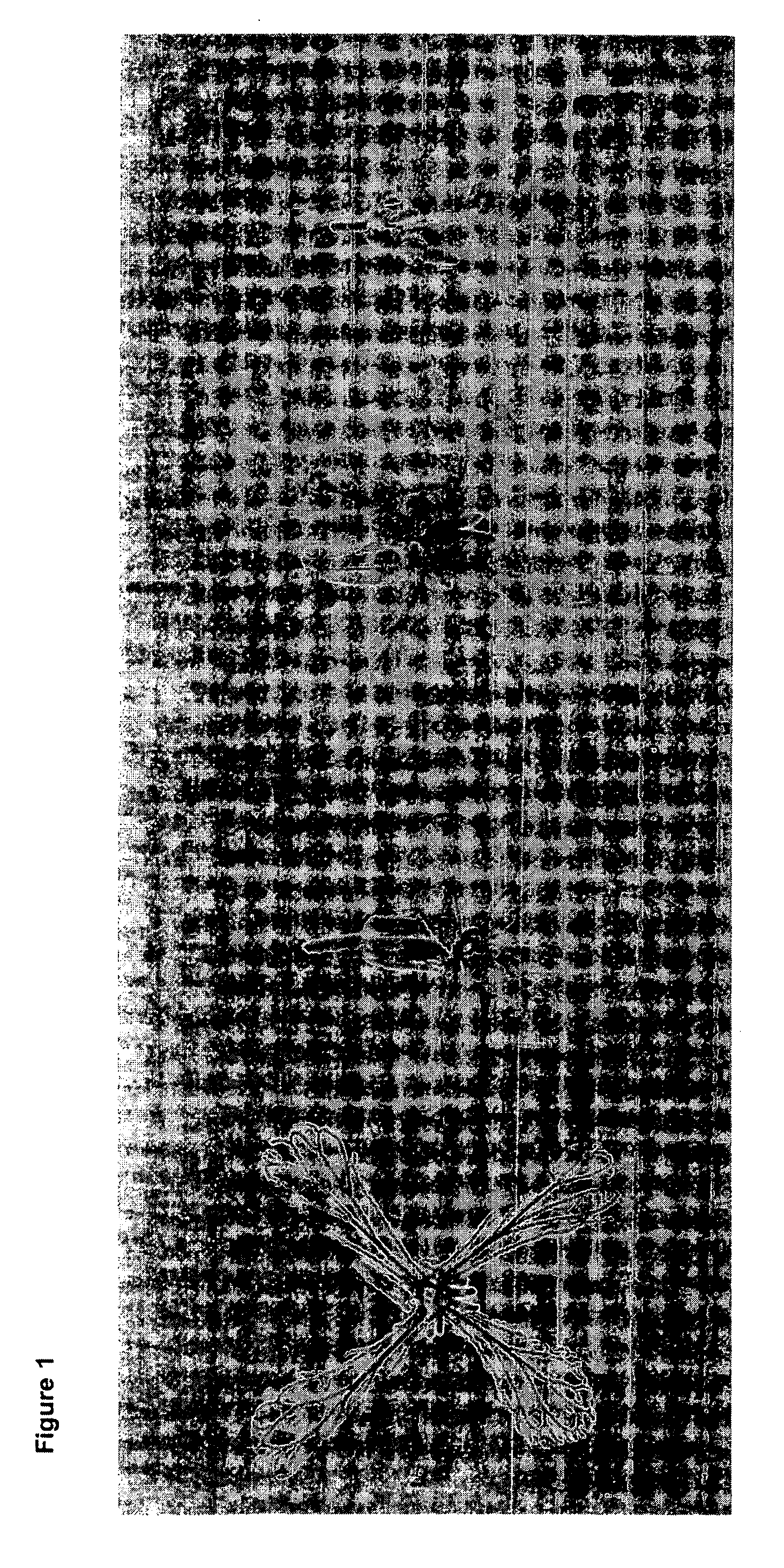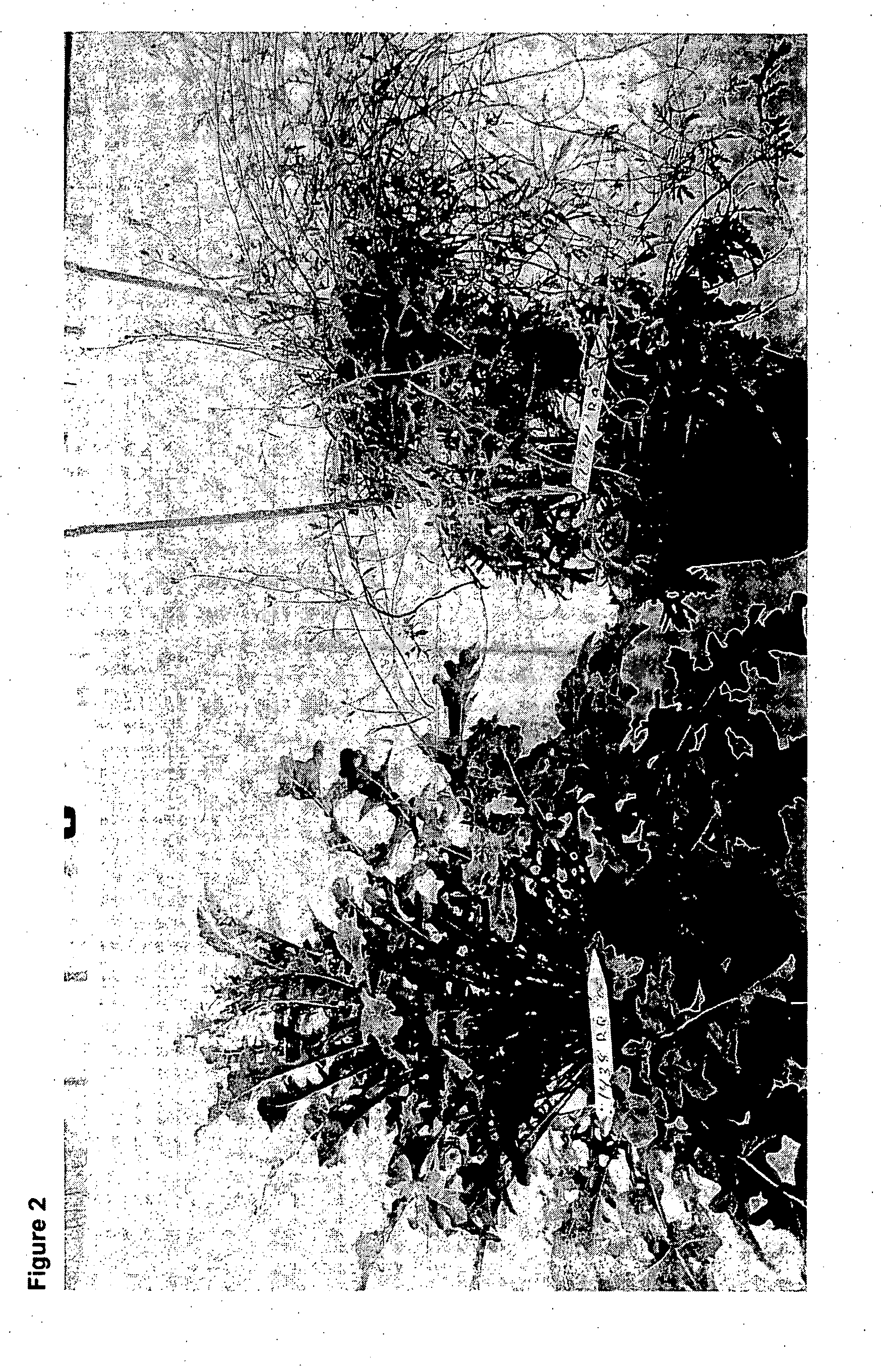Novel rucola plants with cytoplasmic male sterility (CMS)
a cytoplasmic male and rucola technology, applied in the field of rucola plants with cytoplasmic male sterility, can solve the problems of not being able to exploit the opportunities given by male sterility, and achieve the effects of facilitating efficient crop improvement, enhancing yield and disease resistance, and prolonging shelf li
- Summary
- Abstract
- Description
- Claims
- Application Information
AI Technical Summary
Benefits of technology
Problems solved by technology
Method used
Image
Examples
example 1
CMS E. sativa Generated by a Crossing Program
[0134] Interspecific hybridization was carried out using an orange cauliflower F1 hybrid “Cheddar” (Seminis Vegetable Seeds) as mother, and E. sativa cv. “Myway” (L. Daehnfeldt A / S) as father. Numerous interspecific crosses were performed of which a total of 10 F1 plants were regenerated by employing the following embryo rescue procedure:
A. Embryo Rescue
[0135] Approximately 3 weeks after cross-pollination, the siliques were harvested from the pollinated parent plant. The siliques were disinfected for 20 minutes in a 2.5% corsoline solution and rinsed three times in sterile water. The siliques were then cut in a longitudinal direction and the embryos removed and plated on MS medium (Table 1), with 3% sucrose and without hormones, in a plastic container. The embryos were then grown at 25° C. in 16 h light for at least two weeks. When the embryos had germinated into plants and developed roots they were subcultured on peat, covered with w...
example 2
CMS E. sativa Generated by Protoplast Fusion
A. Seed Sterilization and Germination
[0150] Seeds of B. oleracea or B. napus with CMS are dipped for approximately 10 seconds in 70% alcohol and sterilized in a 1.5% sodium hypochlorite solution for two times for 10 minutes at 20° C. The sterilised seeds are then extensively rinsed with sterile distilled water. The seeds are then placed on the MS nutrient medium (see table 1) with 3% sucrose and without hormones. To obtain green sterile plants, the seeds are grown in glass jars in the light (8000 lux), for a 16 hour photoperiod with temperatures of 25° C. day and 20° C. night. Sterile shoots are subcultured under the same conditions in plastic containers. To obtain white tissue for protoplast isolation, e.g. hypocotyls, the seeds are grown in petri dishes in the dark at 25° C.
B. Isolation of Protoplasts
[0151] Leaves of four-week old shoots of plant material according to example 3 are cut into small pieces and incubated in an enzyme s...
example 3
CMS Identification by DNA Markers
[0158] A DNA marker was used to detect the presence of “Ogura” CMS in plant material. Detection of the marker was based on a Polymerase Chain Reaction (PCR) procedure employing the primer combination oligo37 and oligo38 (table 5). This primer combination yields a 512 bp PCR fragment when the “Ogura” CMS-marker “orf138” is present.
TABLE 5Oligo 37 (upper primer):5′GCA TCA CTC TCC CTG TCG TTA TCG3′Oligo 38 (lower primer):5′ATT ATT TTC TCG GTC CAT TTT CCA3′Cob gene (upper primer):TCT TCT CTC GGG GTC ATC CTCob gene (lower primer):CCC CCT TCA ACA TCT CTC AT
[0159] The PCR was performed on total DNA extracted from 16 samples consisting of cauliflower with and without “Ogura” CMS, normal male fertile cultivars of E. sativa and Ft and BC1 crosses between CMS-B. oleracea and E. sativa. As an internal positive control a 630 bp marker (“cob gene”) was used.
[0160] All analysed plant samples were first ground in liquid nitrogen. DNA was then extracted from 250 ...
PUM
| Property | Measurement | Unit |
|---|---|---|
| Fraction | aaaaa | aaaaa |
| Fraction | aaaaa | aaaaa |
| Fraction | aaaaa | aaaaa |
Abstract
Description
Claims
Application Information
 Login to View More
Login to View More - R&D
- Intellectual Property
- Life Sciences
- Materials
- Tech Scout
- Unparalleled Data Quality
- Higher Quality Content
- 60% Fewer Hallucinations
Browse by: Latest US Patents, China's latest patents, Technical Efficacy Thesaurus, Application Domain, Technology Topic, Popular Technical Reports.
© 2025 PatSnap. All rights reserved.Legal|Privacy policy|Modern Slavery Act Transparency Statement|Sitemap|About US| Contact US: help@patsnap.com



